[New Sancai Compilation First Release] June 2, 2022 - Queen Elizabeth II, who once famously quipped, "I have to be believed," will celebrate her golden jubilee over the next four days. Countless fashion journalists have reported on how the Queen has not only appeared and been seen over the years, but also stood out from the crowd with her colorful ensembles.
The fashion world rarely takes notice of these meticulously crafted looks, which always – no doubt with the best of intentions – serve as a gorgeous backdrop to showcase the Queen’s jewels. After all, it’s the jewels that no commoner, or royal for that matter, can truly emulate. They’re the jewels that transform Her Majesty’s 5ft 3in frame into a towering royal figure. To celebrate the Queen’s historic and unprecedented 70th anniversary on the throne, it seems appropriate to take a look back at the most dazzling platinum and gem-set jewels from her vast trove. Let’s take a look at the stories behind these designs.
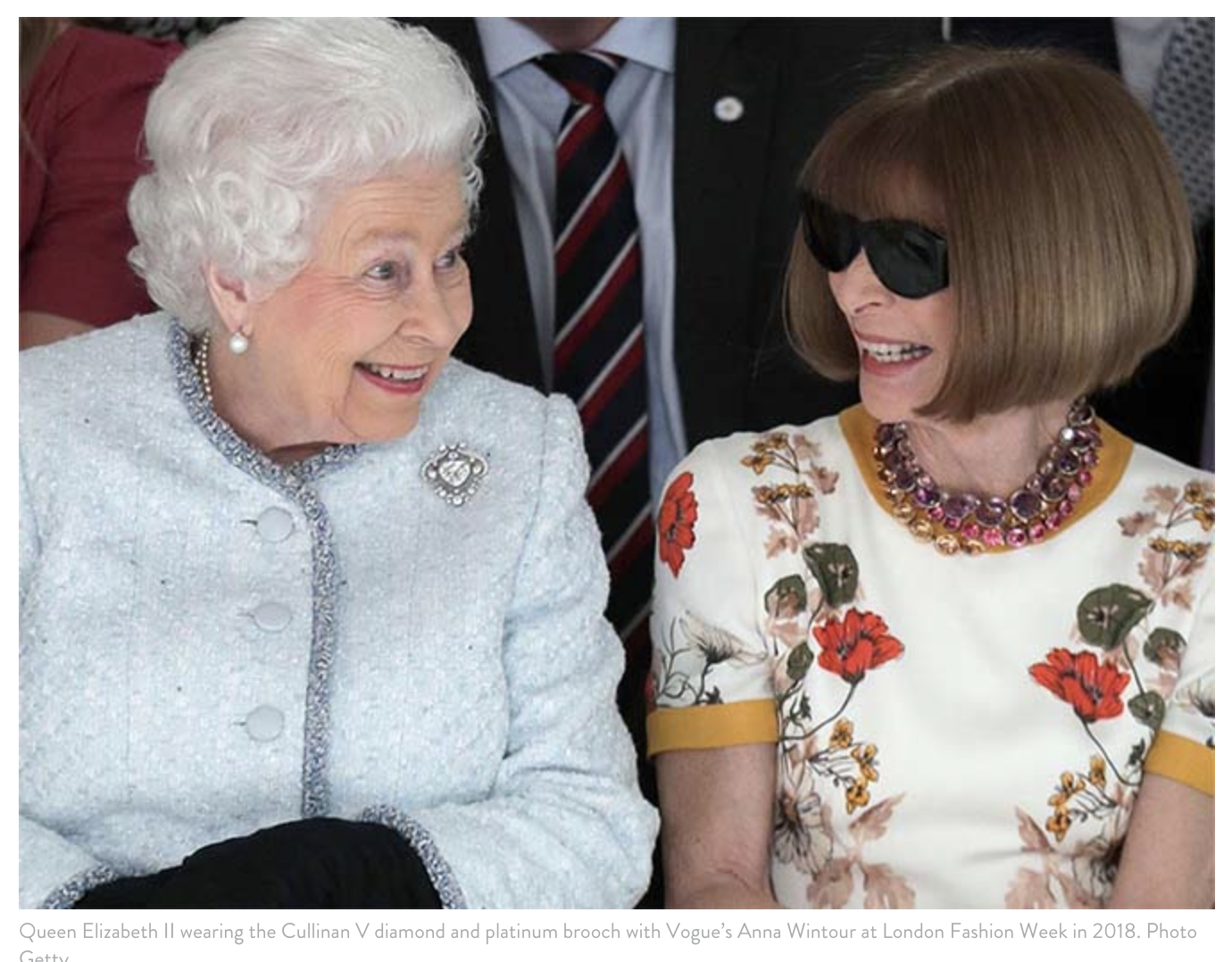
Cullinan V diamond and platinum brooch designed by Gerard
The Queen wears her diamond and platinum Cullinan V brooch, an incredibly historic design, as easily as most of us would show off a pair of jeans. The gem is clearly one of her favorites and has been a staple in Her Majesty’s collection for many years.
The brooch was part of a breaking internet moment during London Fashion Week in 2018. The Queen wore it to sit front row at the Richard Quinn show alongside Anna Wintour, and to present the new talent with the inaugural Queen Elizabeth II Award for British Design.

British jeweler Gerard created the 18.8-carat heart-shaped Cullinan V diamond for Queen Elizabeth's grandmother, Queen Mary, in 1911. The gem was one of 105 cut from the 3,106.75-carat Cullinan, the largest diamond ever found.
The Cullinan V brooch demonstrates the various techniques that early 20th-century jewelers incorporated into platinum designs. Knife-like platinum spokes flare outward from the center. Swirls of metal surround tiny diamonds in the frame. Millegrain, tiny beads, cover the surface, adding delicate texture. All of these flourishes are possible because of platinum’s strength.
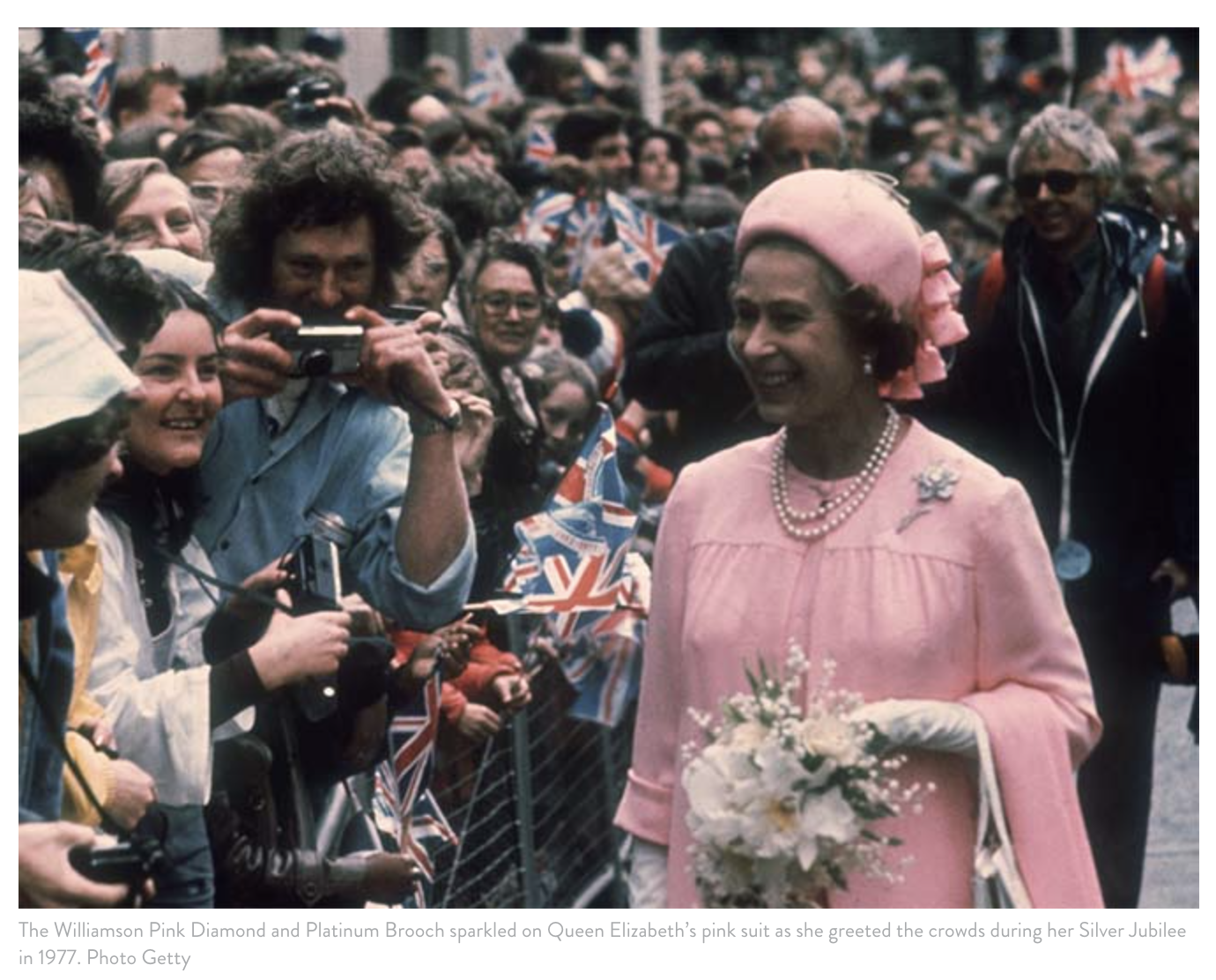
Cartier London’s Williamson Pink Diamond and Platinum Brooch
The Williamson Pink Diamond and Platinum Brooch is part of the Queen’s ensemble for special occasions. During her Silver Wedding Anniversary, she wore the jewel to the Central Celebrations on 7 June 1977.
Other events where she has worn the brooch include both of her children's royal weddings: Prince Charles to Diana in 1981 and Prince Edward to Sophie Rhys-Jones in 1999.
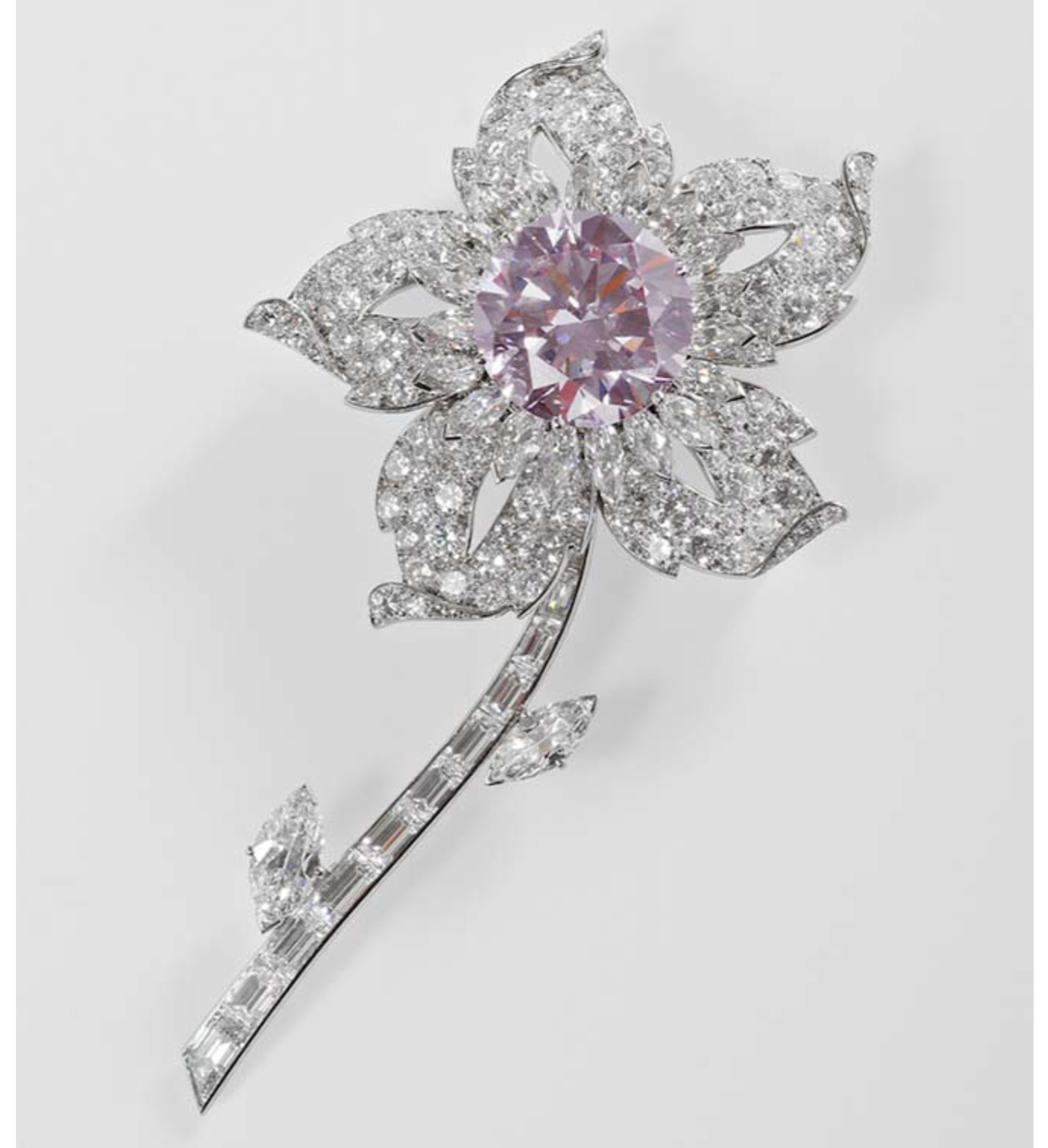
The 23.6-carat Williamson Pink Diamond was a wedding gift to the Queen from Canadian geologist Dr. John Thorburn Williamson, who owned the Mwadui mine in Tanzania where the diamond was discovered.
Cartier in London set the pink diamond in a platinum and white diamond flower brooch in 1953. Multiple diamond shapes accentuate the nearly 4-inch-long gem. Platinum surrounds the edge of the petals, adding a natural touch to the design.
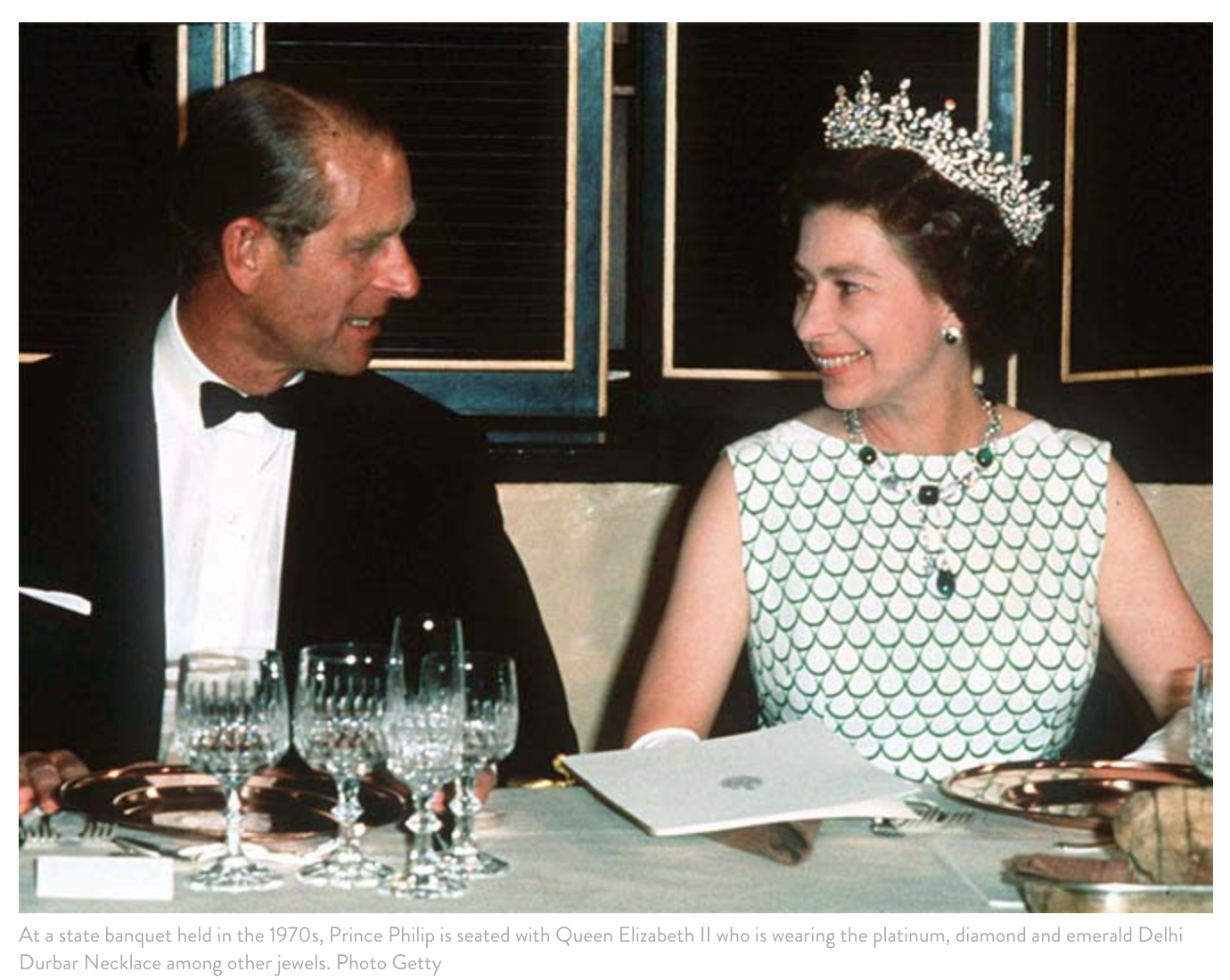
Gerard's Delhi Durbar Necklace
As the name of this platinum, diamond and emerald gemstone suggests, it was made for Queen Mary to wear at the Delhi Durbar Ball in 1911. The event marked the ascension of King George V to the British throne and thus his becoming Emperor of India, which was still under British rule at the time.
When Mary died in 1953, she bequeathed the jewels to Queen Elizabeth. Her Majesty wears the necklace at formal dinners. In the photo above, taken around 1970, she pairs the jewels with a stylish gown, a tiara and emerald earrings.
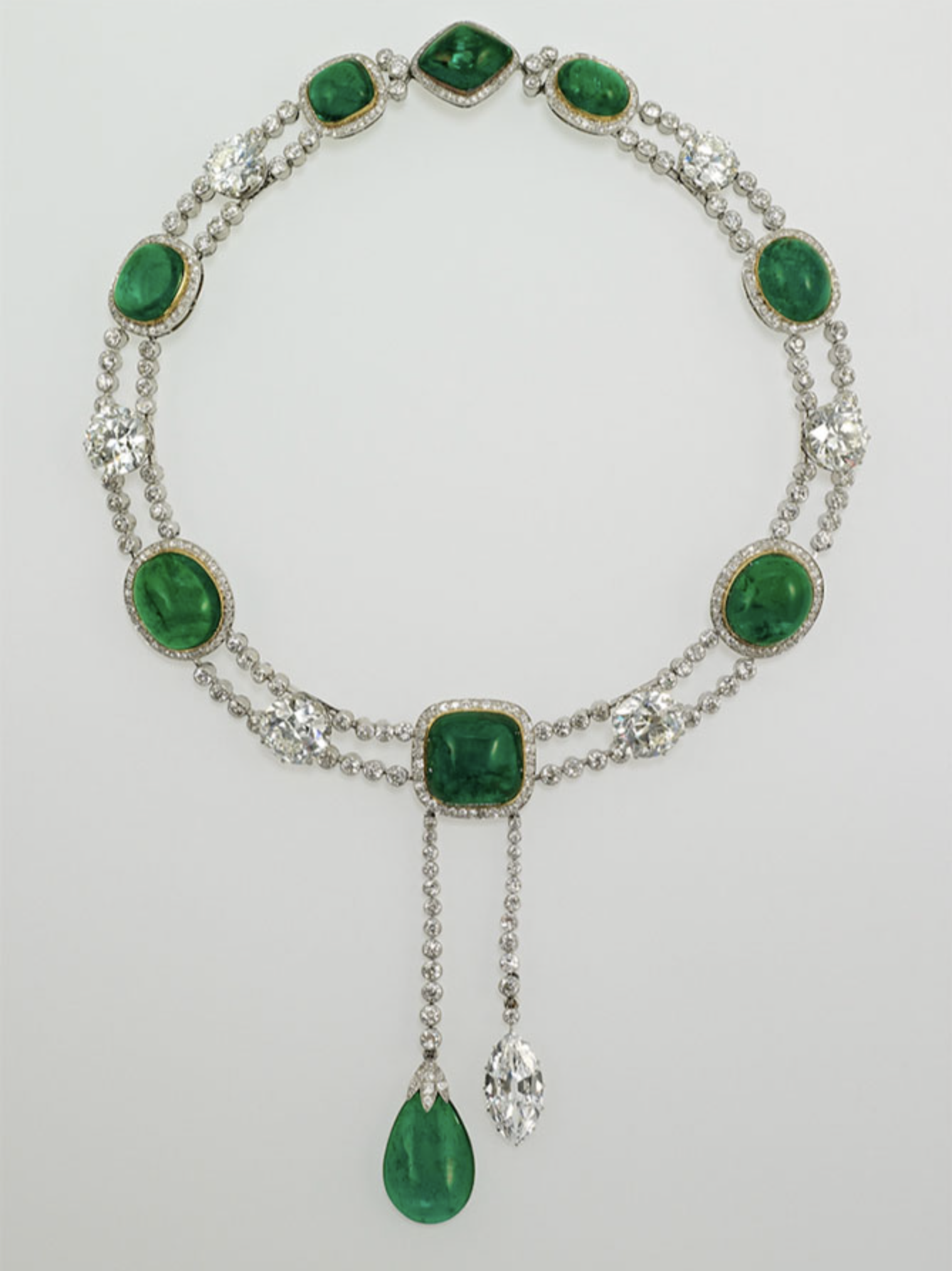
The Delhi Durbar necklace is a pajama-style design, which means it has two asymmetrical necklaces in the front. Overall, the platinum pajama necklaces made in the first half of the 20th century are very delicate and embellished with small diamonds.
The Queen’s Delhi Durbar necklace is typical of the reverse scale of the style. Her ring has huge cabochon emeralds and diamonds. At the end of the hairline is a pear-shaped cabochon emerald and an 8.8-carat Cullinan VII diamond.
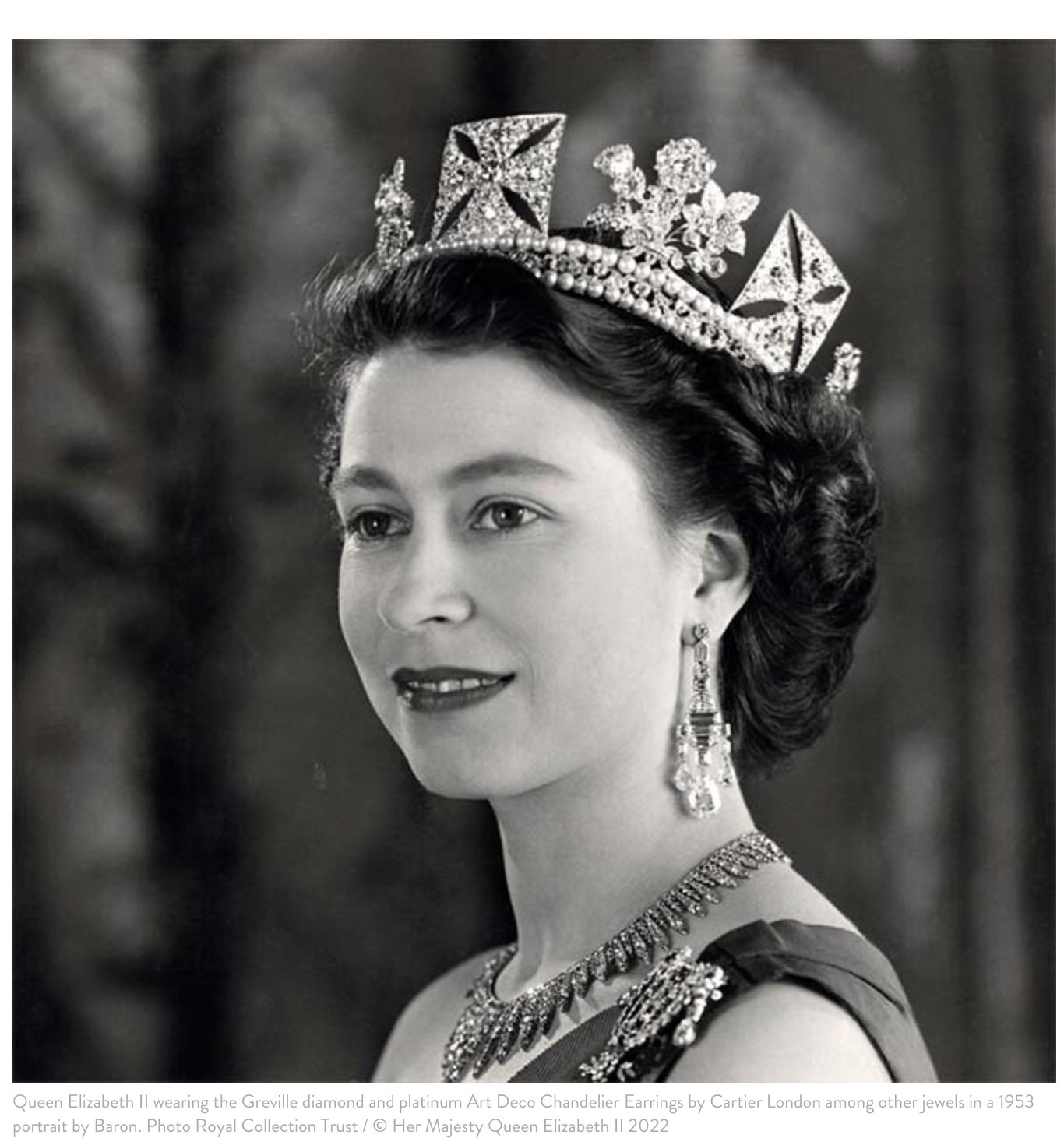
Greville Chandelier Diamond and Platinum Earrings by Cartier London
Early in her reign, Queen Elizabeth often wore the stunning Greville platinum and diamond earrings made by Cartier in 1929. The jewels were a wedding gift to her from her parents, King George VI and Queen Elizabeth.
The Queen Mother inherited the earrings, along with many other jewels, in 1942 from a British heiress named Margaret Greville.
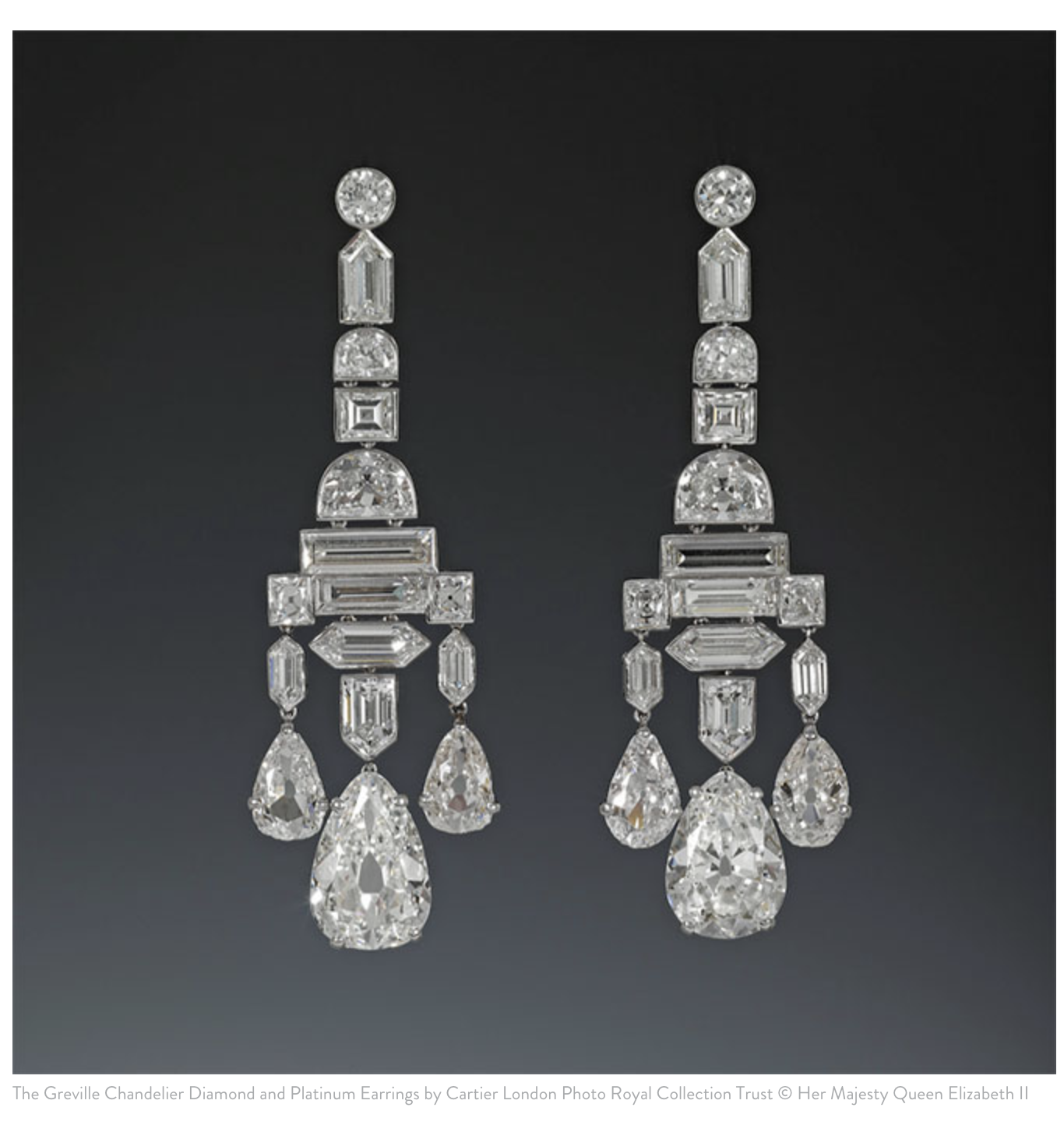
The Greville Chandelier Diamond and Platinum Earrings are a classic example of Art Deco design. During that era, a variety of fancy diamonds—some of which jewelers were beginning to cut for the first time—gave jewelry its signature geometric look. Some of the fancy diamond shapes featured in these nearly three-inch-long earrings are half-moon, trapezoid, square, baguette, baguette and emerald-cut gemstones.
By the 1920s, platinum was already recognized as the best metal for making important jewelry. The platinum setting of the Greville chandelier earrings follows the lines of the gemstones in the body of the earrings. The pear-shaped diamond hanging from the bottom is secured by a platinum prong.
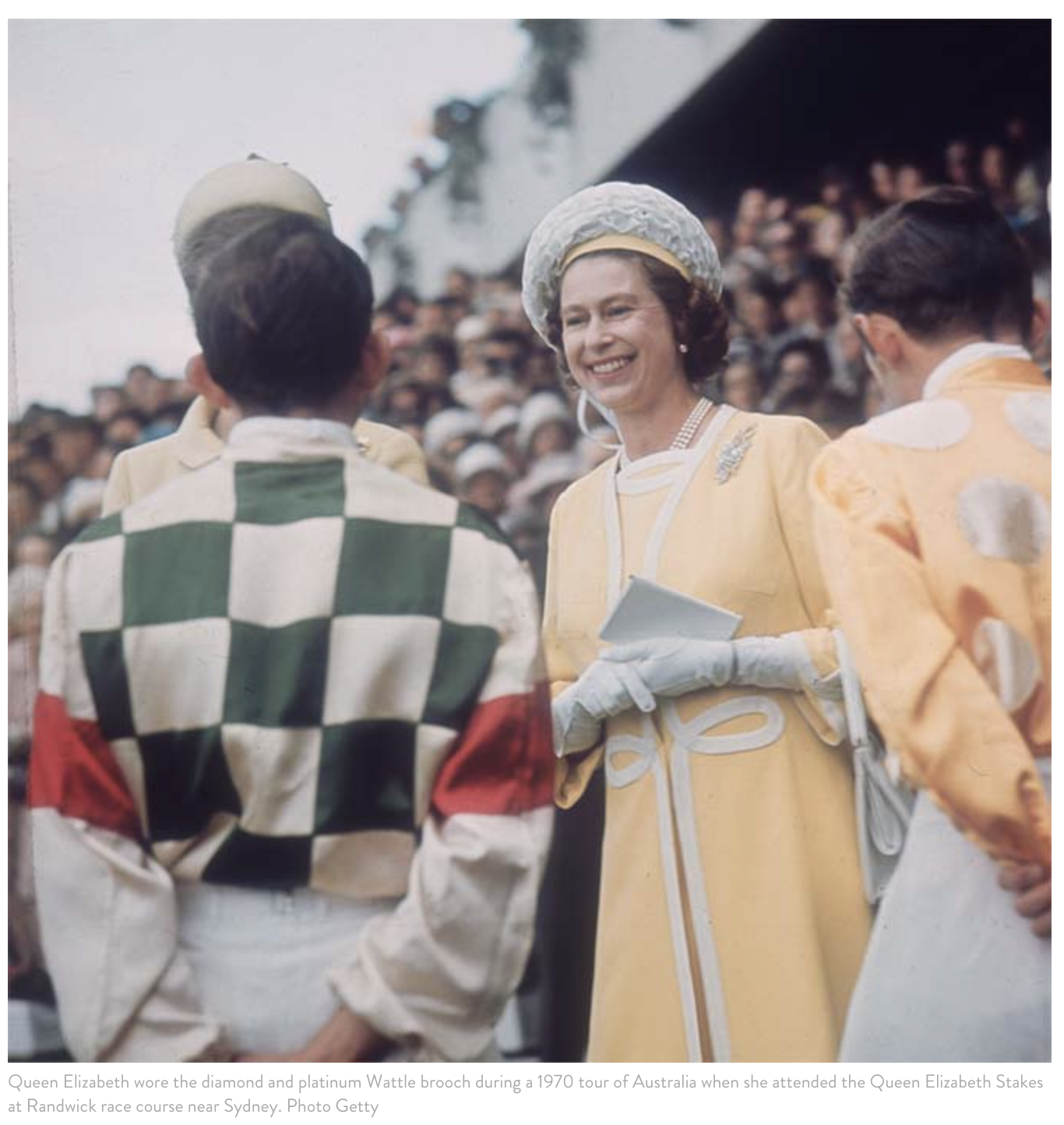
The Queen’s Diamond and Platinum Australian Pendant Brooch by William & Drummond.
Several of Queen Elizabeth’s many diamond and platinum brooches feature symbols of Commonwealth nations. One of her most famous pieces is the Platinum Diamond Canada Maple Leaf. The Queen’s Diamond and Platinum Australia Pendant Brooch is another example.
The Australian Wattle Brooch, made by Melbourne jewellers William & Drummond and symbolising Australia’s national flower, was given to the Queen on her first visit to Australia in 1954. Over the years she has paired the jewellery with yellow and green outfits, highlighting the yellow diamonds in the design.
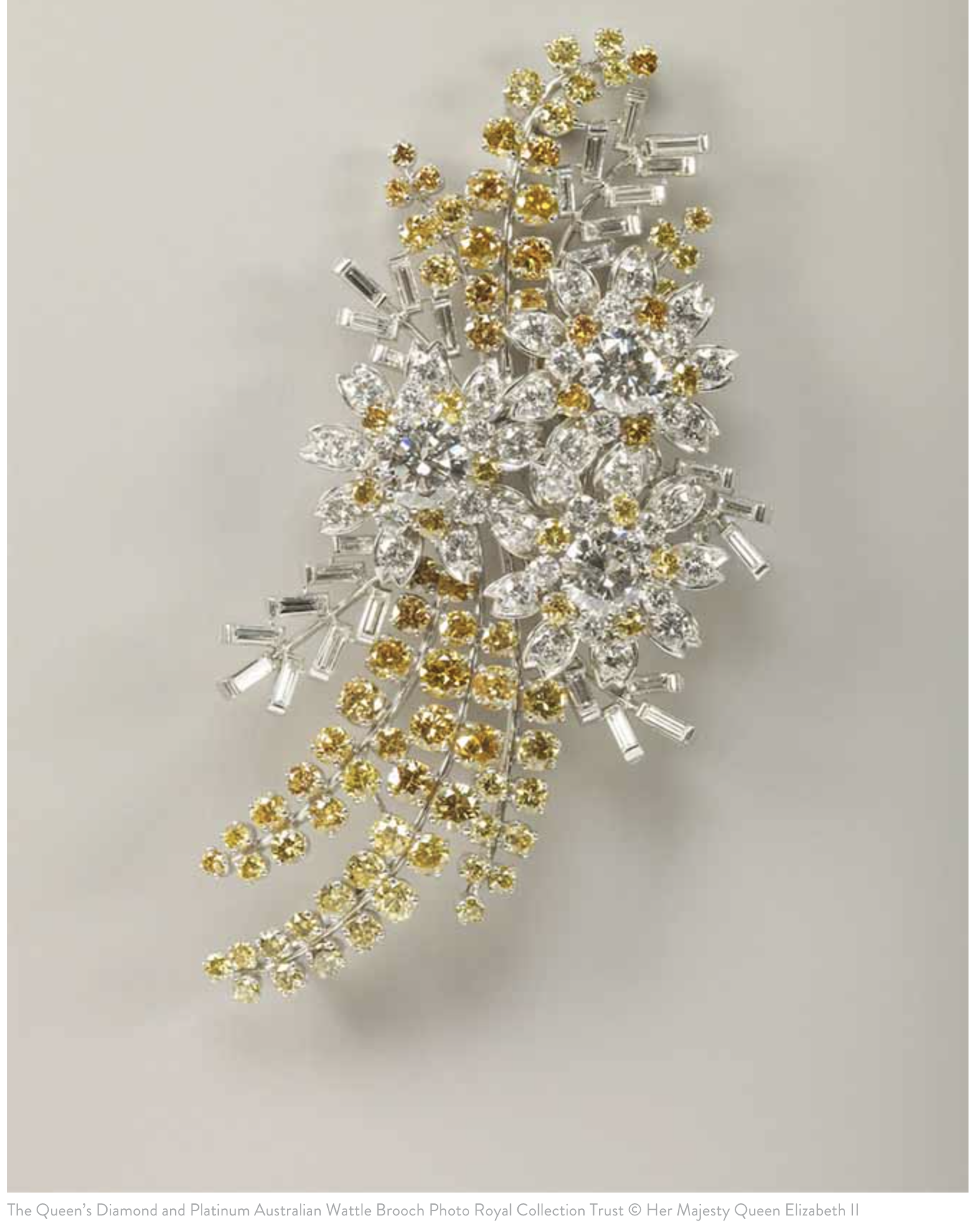
There is something so elegant about the way this master craftsman worked platinum into fine lines to showcase the gemstones in this Australian wattle brooch.
It is one of the jewels selected by curators at the Royal Collection Trust as part of the Queen's Platinum Jubilee exhibition. The piece will be part of a historic exhibit at Windsor Castle commemorating Her Majesty's coronation at Westminster Abbey on June 2, 1953.
(Author: Marion Fasel)
(Source: the adventurine website)
(Compiled by Wang Jijun)
(Editor: Jiang Qiming)
(Source: New Sancai Compilation and First Release)
